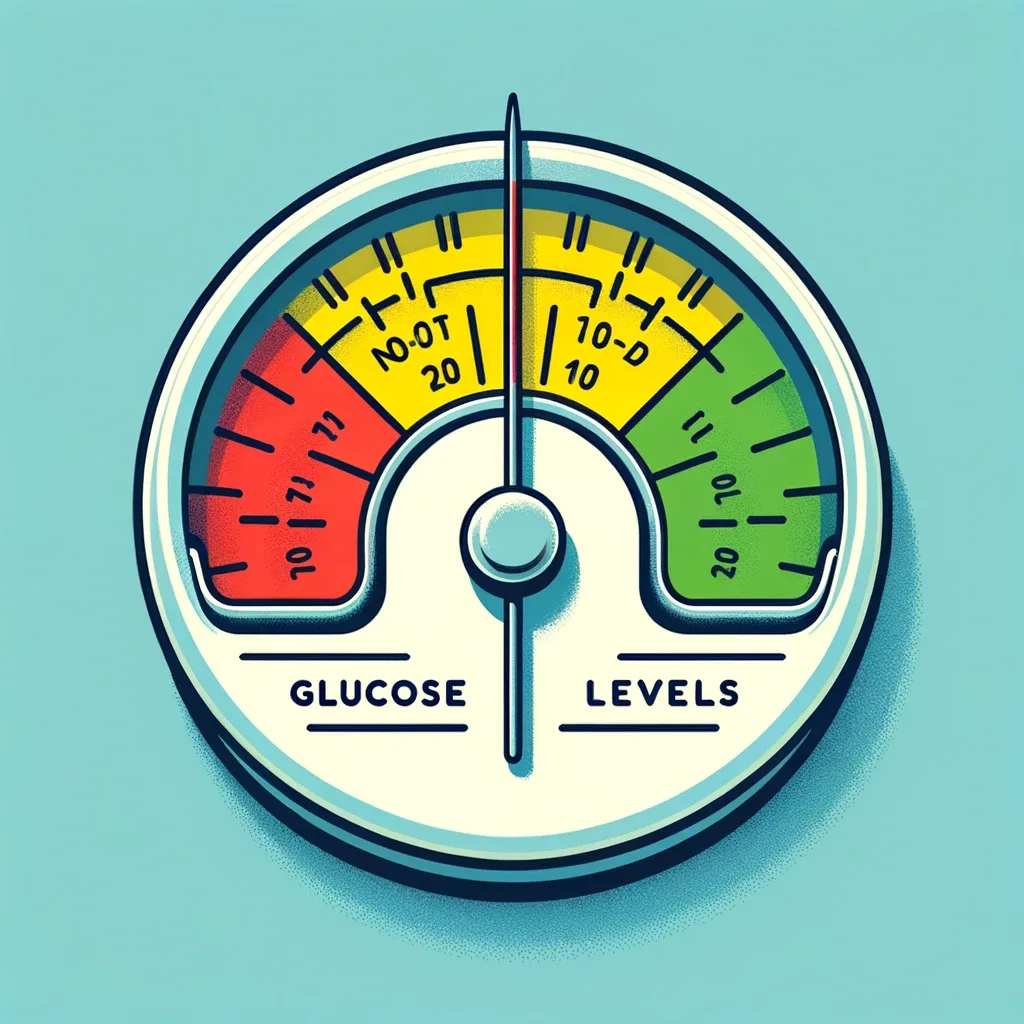Is Prediabetes Reversible? Understanding Your Path to Better Health
Introduction
Is prediabetes reversible? This question looms large for the millions who find themselves diagnosed with this early warning sign of diabetes. In this post, we’ll explore what prediabetes is, its implications, and most importantly, how you can reverse it. Prediabetes is a pivotal moment for intervention that can significantly alter one’s health trajectory, turning away from potential chronic illness towards a healthier future.
What is Prediabetes?
Understanding Prediabetes
Prediabetes is a health condition characterized by blood sugar levels that are higher than normal but not yet high enough to be classified as diabetes. It serves as a red flag, an indication that your body’s metabolism is impaired and that without intervention, type 2 diabetes is likely to develop.
The Growing Concern
Indeed, prediabetes is among the most common health conditions in the contemporary world. According to a 2020 study, about 88 million American adults were estimated to have prediabetes. As of today, the Centers for Disease Control and Prevention (CDC) estimates this number to have risen to approximately 97.6 million—roughly 38% of the U.S. adult population. This staggering statistic means that more than one in three people could be walking a thin line towards diabetes, with most of them being unaware of their prediabetes status.
In the next section, we will delve into whether prediabetes can be reversed, and the steps that can be taken to not only prevent the progression to diabetes but also improve overall health. Stay tuned as we uncover how lifestyle changes play a crucial role in reversing this condition.
This staggering statistic means that more than one in three people could be walking a thin line towards diabetes, with most of them being unaware of their prediabetes status.
How Prediabetes Happens
The Origin of High Blood Sugar
The journey to prediabetes often begins with how the body handles sugar, or glucose. Glucose enters your bloodstream from two primary sources: the food you eat and your liver. When you consume foods rich in sugars and starches, they are digested and broken down into glucose, which is then absorbed into your bloodstream, causing a rise in blood sugar levels.
In response, your pancreas secretes insulin, a hormone that helps shuttle glucose from the blood into your cells where it’s used for energy. Normally, this system keeps your blood sugar levels within a healthy range.
The Role of Insulin Resistance
However, in prediabetes, this process doesn’t work as it should. Although the pancreas produces insulin, the cells become less responsive to it, a condition known as insulin resistance. As a result, blood sugar levels remain higher than normal. To compensate, the pancreas produces even more insulin, trying to bring blood sugar down to a healthy level.
Over time, this cycle of insulin resistance and compensatory insulin production can lead to continuously elevated levels of both blood sugar and insulin. This gradual increase doesn’t happen overnight but evolves over several years, marking the transition from normal glucose tolerance to prediabetes, and potentially, to type 2 diabetes if unchecked.

The Risks of Ignoring Prediabetes
It’s crucial to understand that prediabetes isn’t merely a warning sign; it’s a direct contributor to various health issues. During the prediabetes stage, some individuals may already begin to develop complications associated with diabetes, such as damage to the eyes, kidneys, and nerves, often years before any clear symptoms appear. In addition, prediabetes significantly increases the risk of heart disease, underscoring the importance of taking this condition seriously.
Who Gets Prediabetes?
Identifying Risk Factors for Prediabetes
Understanding who is most at risk for developing prediabetes is crucial for early intervention and prevention. According to the Centers for Disease Control and Prevention (CDC), several factors significantly increase the likelihood of developing this condition.
Key Risk Factors for Prediabetes
Body Mass Index (BMI) and Metabolic Syndrome
Having a BMI of 25 or higher is a notable risk factor, particularly if excess weight is carried around the abdomen. This distribution of body fat is often associated with metabolic syndrome, which includes other risk factors such as elevated blood pressure. These factors together heighten the risk of progressing from prediabetes to type 2 diabetes.
- Age: age also plays a significant role, with individuals aged 45 and older being at higher risk. This is due to various factors, including decreased insulin sensitivity and changes in body composition as we age.
- Family History: a family history of type 2 diabetes increases the risk, even for those who are not obese. Genetics can play a pivotal role in susceptibility to glucose metabolism issues.
- Lifestyle Factors: a sedentary lifestyle is another major risk factor. Regular physical activity helps to improve insulin sensitivity and can significantly reduce the risk of developing prediabetes.
- History of Gestational Diabetes: women who have had gestational diabetes during pregnancy are at a higher risk of developing prediabetes later in life. This history indicates an already existing issue with glucose tolerance.
- Ethnic Background: certain ethnicities, including African, Indian, Hispanic, Pacific Islander, and Native American groups, are more prone to developing prediabetes.
- Polycystic Ovary Syndrome (PCOS): women with polycystic ovary syndrome (PCOS) are particularly susceptible to prediabetes due to their inherent issues with insulin resistance.
Preventative Actions If You’re at Risk
Being aware of these risk factors is the first step towards prevention. For individuals who identify with one or more of these risk factors, it is advisable to undergo regular screening for prediabetes. Early detection allows for timely intervention through lifestyle changes and monitoring, potentially preventing the progression to type 2 diabetes.
How to Know if You Have Prediabetes
Silent But Significant
One of the challenges with prediabetes is that it often goes unnoticed. Many people with prediabetes don’t experience noticeable symptoms, which can delay diagnosis and intervention. Without symptoms driving a medical consultation, this condition can quietly progress to type 2 diabetes.
Subtle Signs to Watch For
A possible subtle sign of prediabetes is the development of darkened skin on various parts of the body, such as the neck, armpits, or groin, known as acanthosis nigricans. This condition is associated with elevated insulin levels and is more common in individuals with insulin resistance.
Diagnostic Criteria for Prediabetes
Prediabetes can be diagnosed through several tests:
- Fasting Blood Glucose: A level between 100 to 125 mg/dL indicates prediabetes.
- Hemoglobin A1c (HbA1c): An A1c between 5.7% and 6.4% suggests prediabetes.
- Oral Glucose Tolerance Test (OGTT): A blood glucose level between 140 and 199 mg/dL two hours after consuming a glucose solution indicates prediabetes.
Fasting glucose and HbA1c tests are commonly used due to their simplicity. If your recent lab report doesn’t include these values, consider asking your doctor for an HbA1c test. Additionally, while home blood glucose meters can help monitor your levels, they are not a substitute for lab tests needed for a formal diagnosis.

Understanding how to detect and recognize prediabetes is crucial for taking proactive steps toward health management. In the following section, we will explore whether and how prediabetes can be reversed, focusing on effective lifestyle changes and preventive measures.
How to Reverse Prediabetes – Start Today!
Diet: The Impact of a Very Low Carbohydrate Ketogenic Diet (VLCKD)
Overview of a Groundbreaking Study
Recent findings published in the Journal of Metabolic Health have provided strong evidence that a very low carbohydrate ketogenic diet (VLCKD) can be highly effective in managing and potentially reversing prediabetes. This conclusion comes from an extensive audit conducted by the Glandt Center for Diabetes Care in Tel Aviv, Israel, which followed the health outcomes of patients between 2015 and 2022 who committed to a VLCKD.
Key Findings from the Study
The audit encompassed 344 patients diagnosed with either type 2 diabetes or prediabetes. These participants adhered to a VLCKD for six months. The results demonstrated remarkable improvements in several critical health markers:
- Blood Sugar Control: Individuals with prediabetes experienced a significant reduction in hemoglobin A1c (HbA1c) levels, from an average of 42 mmol/mol (6%) down to 38.7 mmol/mol (5.7%), effectively moving their blood sugar levels from the prediabetic range back towards normal.
- Weight Loss: Significant weight loss was observed in both prediabetic and diabetic participants, which is particularly beneficial as excess body weight is a major risk factor for the advancement of diabetes. Prediabetic individuals lost an average of 5.7 kg, which plays a crucial role in mitigating metabolic health risks.
- Improvements in Other Health Areas: Participants also saw improvements in other health metrics such as blood pressure, lipid profiles, and liver function tests. These are vital as they contribute to a lower risk of cardiovascular diseases, which are often seen in association with diabetes and prediabetes.
- Reduction in Medication: One of the most impactful outcomes was the reduction in insulin usage among participants. For those who were initially using insulin, there was a significant decrease in their need for it by the end of the study period, with an average reduction in dosage of 72%.
Recent findings published in the Journal of Metabolic Health have provided strong evidence that a very low carbohydrate ketogenic diet (VLCKD) can be highly effective in managing and potentially reversing prediabetes.
Implications for Prediabetes Management
The results of this audit strongly support the potential of a VLCKD not only in managing prediabetes but in reversing it. The decrease in insulin dependency is especially significant as it reflects not just an improvement in glycemic control but also a potential reduction in long-term complications related to high insulin levels.
This study illustrates that by substantially reducing carbohydrate intake, individuals with prediabetes can achieve profound improvements in their metabolic health. Thus, a VLCKD may serve as an effective first-line dietary approach to halt the progression of prediabetes to type 2 diabetes.

How to Change Your Diet to Combat Prediabetes
The Importance of Carbohydrate Management
The role of diet in reversing prediabetes is critical, particularly in how you manage your carbohydrate intake. While a very low carbohydrate ketogenic diet (VLCKD) has been shown to be effective, there are flexible ways to adapt your diet to suit your preferences and lifestyle while still focusing on reducing carb intake.
Commercial Bakeries: You Can Better Serve Your Low Carb Customers
You can easily produce delicious diabetic-safe, very low carbohydrate keto-friendly products to help your customers along their low carbohydrate journey out of prediabetes.
Keto PowerFlax Baking Mix is also clean label, high protein and plant-based!
- Recipes provided on all bulk orders
- Ongoing customer support always available
- To order, visit our wholesale distributor, SnowCap Enterprises, and search: Powerflax Gold Low Carb Mix (SNC80).
- Worldwide shipping is available – contact laurie@powerflax.net
How to Adopt a Healthy Low Carb Prediabetes Diet
Reducing carbohydrate intake is a cornerstone of managing prediabetes. But how low should you go? Studies suggest aiming for about 30 to 50 grams of total carbs per day, equivalent to 20 to 30 grams of net carbs. This level has been effective in significantly lowering blood sugar levels and reducing prediabetes symptoms.
However, personal carb tolerance can vary. To find your own carb threshold, you can monitor your blood sugar one to two hours after eating, ensuring it stays below 140 mg/dL (7.8 mmol/L). This self-monitoring can help you adjust your diet more precisely to maintain healthy blood sugar levels.
Studies suggest aiming for about 30 to 50 grams of total carbs per day, equivalent to 20 to 30 grams of net carbs. This level has been effective in significantly lowering blood sugar levels and reducing prediabetes symptoms.
Foods to Include in Your Low Carb Prediabetes Diet
A well-planned low carb diet for prediabetes might include:
- Protein Sources: Lean meats, poultry, seafood, eggs, Greek yogurt, cheese, tofu, and edamame. These help maintain muscle mass and ensure adequate nutrient intake.
- Non-Starchy Vegetables: Leafy greens, asparagus, cauliflower, broccoli, avocados, and cucumbers. These vegetables are low in carbs but high in fiber and essential nutrients.
- Limited Quantities of Other Foods: Include smaller amounts of berries, nuts, seeds, as well as healthy fats like butter and oils. These provide essential fatty acids and antioxidants without significantly spiking blood sugar levels.

Crafting Low Carb Meals for Prediabetes
Planning meals with a focus on low carbs can be straightforward and satisfying by following these steps:
- Start with Protein: Aim for at least 4 ounces (113 grams) per meal—about the size of a deck of cards. This could be meat, seafood, or a plant-based protein like tofu.
- Add Plenty of Non-Starchy Vegetables: Fill up on these to add volume and nutrients to your meals without adding many carbs.
- Incorporate Healthy Fats: Use a tablespoon or two of fats like butter or olive oil for cooking or in salads to enhance flavor and satisfaction.
- Season Well: Don’t shy away from using salt and spices, which can enhance flavors and improve the eating experience, especially when transitioning to a lower carb diet.
The Benefits of a High Protein Diet
Protein is vital not only for its role in maintaining and building muscle but also for its ability to increase satiety, which can help manage hunger and prevent overeating. High protein intake can slightly boost metabolism and improve body composition, both of which are beneficial in reversing prediabetes.
A notable study found that all participants with prediabetes who followed a high protein, moderate carb diet for six months returned their blood sugar levels to normal. This aligns with earlier findings that diets effective in reversing prediabetes often contain higher levels of protein compared to standard diets.
Studies have found that diets effective in reversing prediabetes often contain higher levels of protein compared to standard diets.
Reversing Prediabetes with Exercise
The Power of Physical Activity
While diet plays a crucial role in reversing prediabetes, incorporating various forms of exercise into your routine can significantly enhance your efforts. Engaging in regular physical activity not only helps in losing body fat but also improves blood sugar control, which is vital for reversing prediabetes.

Types of Exercise to Consider
Aerobic or Cardiovascular Exercises
Aerobic exercises, such as running, cycling, or dancing, are great for elevating your heart rate and burning calories. Regular aerobic activity, even at moderate intensities like brisk walking, has been shown to effectively improve blood sugar levels in individuals with prediabetes. Incorporating this type of exercise several times a week can make a substantial difference in managing your blood sugar.
High-Intensity Interval Training (HIIT)
HIIT involves short bursts of intense exercise alternated with periods of lower-intensity recovery. This method is not only efficient at burning calories but also has been shown to significantly lower blood sugar and improve insulin resistance in individuals with prediabetes or obesity. HIIT can be a more time-efficient way to achieve similar or even greater benefits than standard aerobic workouts.

Resistance Training
Building muscle through resistance training, such as lifting weights or bodyweight exercises like push-ups and chin-ups, not only increases muscle mass but also enhances calorie burning at rest. More muscle mass can help manage blood sugar levels more effectively, as muscles are excellent glucose consumers. Regular resistance training can also reduce the risk of progressing from prediabetes to type 2 diabetes.
Choosing the Right Exercise
The best type of exercise is one that you enjoy and can perform regularly. Since various exercises can help improve prediabetes, it’s essential to choose activities that you find enjoyable and sustainable. Remember, the key to reversing prediabetes is consistency in both dietary and exercise habits.

Make Sleep a Priority
How Sleep Affects Glucose Metabolism and Insulin Sensitivity
- Regulation of Blood Sugar Levels: Sleep helps regulate the hormones that influence glucose metabolism. Poor sleep disrupts these hormonal balances, particularly insulin, which is essential for blood sugar regulation. Inadequate sleep can reduce insulin sensitivity, meaning your body needs more insulin to lower blood sugar levels effectively.
- Impact on Stress Hormones: Lack of sleep increases the production of stress hormones like cortisol, which can further reduce insulin sensitivity. Elevated cortisol levels can cause blood sugar levels to rise, complicating the management of prediabetes.
- Appetite Control: Sleep affects the hormones that control appetite, namely ghrelin and leptin. Sleep deprivation can increase ghrelin (the hunger hormone) and decrease leptin (the satiety hormone), leading to increased hunger and appetite. This often results in higher consumption of calories, especially from quick-energy sources like carbohydrates, exacerbating blood sugar issues and weight management—both critical factors in prediabetes.

Sleep Duration and Quality
- Optimal Sleep Duration: Research indicates that both short and excessively long sleep durations are linked with a higher risk of developing prediabetes and diabetes. Most studies suggest that 7-8 hours of good-quality sleep per night is optimal for adult metabolic health.
- Quality of Sleep: It’s not just the quantity of sleep that matters but also the quality. Interrupted or non-restorative sleep can impair glucose metabolism and insulin sensitivity as much as insufficient sleep duration.
Practical Tips for Improving Sleep
Improving sleep can significantly aid in managing prediabetes effectively. Here are some practical strategies:
- Consistent Sleep Schedule: Going to bed and waking up at the same time every day, even on weekends, helps regulate your body’s internal clock and can improve the quality of your sleep.
- Creating a Restful Environment: Ensure your bedroom is conducive to sleep—cool, dark, and quiet. Investing in a good mattress and pillows can also help.
- Limiting Stimulants: Avoid caffeine and other stimulants several hours before bedtime to help your body wind down more naturally.
- Pre-Sleep Routine: Engage in a relaxing pre-sleep routine, such as reading or meditating, to signal to your body that it’s time to wind down.
- Limiting Screen Time: The blue light emitted by phones, tablets, and computers can interfere with the production of melatonin, the hormone that regulates sleep-wake cycles. Try to avoid these screens for at least an hour before bed.
Work at Managing Chronic Stress
Chronic stress is a significant factor that can influence the development and management of prediabetes. It affects the body in several ways that can exacerbate blood sugar levels and overall metabolic health. Here’s a closer look at how chronic stress impacts prediabetes:
Hormonal Impact of Stress on Blood Sugar Levels
- Cortisol and Adrenaline Release: Chronic stress leads to prolonged elevation of stress hormones such as cortisol and adrenaline. These hormones are designed to prepare the body for a “fight or flight” response by increasing blood sugar levels to provide immediate energy to muscles. However, when these hormone levels remain high due to ongoing stress, they can cause elevated blood glucose levels over time.
- Impact on Insulin Resistance: Elevated cortisol levels can directly contribute to insulin resistance, a key component of prediabetes. Insulin resistance occurs when cells in the muscles, fat, and liver don’t respond well to insulin and can’t easily take up glucose from the blood. As a result, the pancreas produces more insulin to help glucose enter the cells. Prolonged stress exacerbates this condition, making it harder for the body to manage glucose levels effectively.

Behavioral Changes Due to Stress
- Poor Eating Habits: Stress often affects eating patterns, leading to unhealthy food choices. Many people under stress may opt for foods high in fats and sugars, which can lead to weight gain—a risk factor for prediabetes. Overeating in response to stress is also common due to the comforting effects of food, particularly carbohydrates, which temporarily increase serotonin levels and improve mood.
- Reduced Physical Activity: Chronic stress can decrease motivation or energy for exercise. Physical activity is crucial for managing weight and improving insulin sensitivity, and its reduction can hinder effective management of prediabetes.
Psychological Effects and Sleep Disruption
- Mental Health: Chronic stress is closely linked to conditions such as depression and anxiety, which can further complicate the management of prediabetes. Mental health issues can create a cyclical pattern where stress causes mental distress, which then leads to even more stress.
- Sleep Disturbances: Stress can lead to sleep problems, including difficulty falling asleep, staying asleep, or achieving restorative sleep. As discussed previously, poor sleep can increase insulin resistance and interfere with hormones that regulate appetite, further complicating prediabetes.
Strategies to Manage Stress
Given the impact of stress on prediabetes, managing stress effectively is crucial:
- Regular Physical Activity: Exercise is a powerful stress reliever. Activities like yoga, walking, or any form of exercise can reduce stress levels and improve mood by releasing endorphins, known as “feel-good” hormones.
- Mindfulness and Meditation: These practices can help calm the mind and reduce stress. Techniques such as deep breathing, mindfulness meditation, or progressive muscle relaxation can be particularly effective.
- Adequate Support: Engaging with a supportive community or seeking professional help from a therapist can be beneficial. Talking about your feelings and challenges can help reduce stress and provide strategies to manage it better.
- Time Management: Effective time management can reduce stress by preventing the feeling of being overwhelmed. Prioritizing tasks, setting realistic goals, and taking breaks can help manage both time and stress levels.

Chronic stress significantly impacts the development and progression of prediabetes by affecting both physiological processes and lifestyle behaviors. Addressing stress through comprehensive strategies that include lifestyle changes, support systems, and stress management techniques is essential for controlling prediabetes and improving overall health.
Monitoring and Managing Prediabetes
The Importance of Regular Health Check-Ups
Regular monitoring and medical check-ups are vital components in effectively managing and potentially reversing prediabetes. These practices allow individuals to keep track of their health status and make informed decisions about their lifestyle and treatment options.

Key Aspects of Monitoring Prediabetes
Regular Blood Tests
Regular blood tests, including hemoglobin A1c and fasting glucose tests, are crucial for monitoring blood sugar levels. These tests provide insights into how well your current lifestyle and any medical interventions are controlling your blood sugar, and whether any adjustments are necessary.
Importance of Frequent Medical Consultations
Frequent consultations with healthcare providers can help manage the progression of prediabetes. These sessions are opportunities to discuss the effectiveness of prescribed lifestyle changes, monitor for the development of any diabetes-related complications, and adjust treatment plans as needed.
Long-Term Management Strategies
Managing prediabetes is not only about making temporary changes but also about integrating long-term adjustments into your lifestyle. This involves a consistent commitment to healthy eating, regular physical activity, and stress management.
Lifestyle Adjustments
Continuing to adhere to a diet low in fast-digesting carbohydrates, rich in protein, and incorporating regular exercise routines are fundamental. Maintaining these habits can significantly reduce the risk of prediabetes progressing to type 2 diabetes.
Continuous Education
Staying informed about the latest research and guidelines in prediabetes management can empower individuals to make better health decisions and adjust their management strategies as new information becomes available.
Final Thoughts
Prediabetes is a reversible condition with the right approach to lifestyle changes and medical management. Regular monitoring and proactive health check-ups play essential roles in this process, allowing for timely interventions that can prevent the progression to type 2 diabetes. By understanding and implementing the strategies discussed throughout this post, individuals can significantly improve their health outcomes and potentially reverse prediabetes.
Remember that the journey to reversing prediabetes is a continuous process that requires dedication and perseverance. Whether you are at risk, currently managing prediabetes, or simply aiming to improve your overall health, the steps outlined in this blog can guide you towards a healthier lifestyle. Take action today, stay consistent, and make health a priority — your future self will thank you.
We hope this post has provided you with the information and motivation needed to address and reverse prediabetes.
Keep pushing forward, stay informed, and embrace a healthier lifestyle for lasting benefits. You can do this!
Commercial Bakeries: You Can Better Serve Your Low Carb Customers
You can easily produce delicious diabetic-safe, very low carbohydrate keto-friendly products to help your customers along their low carbohydrate journey out of prediabetes.
Keto PowerFlax Baking Mix is also clean label, high protein and plant-based!
- Recipes provided on all bulk orders
- Ongoing customer support always available
- To order, visit our wholesale distributor, SnowCap Enterprises, and search: Powerflax Gold Low Carb Mix (SNC80).
- Worldwide shipping is available – contact laurie@powerflax.net
References
- Use of a very low carbohydrate diet for prediabetes and type 2 diabetes: An audit. Journal of Metabolic Health
- Jin J. What Is Prediabetes? JAMA. 2023;330(24):2404. doi:10.1001/jama.2023.17846
- Comparing Very Low-Carbohydrate vs DASH Diets for Overweight or Obese Adults With Hypertension and Prediabetes or Type 2 Diabetes: A Randomized Trial. PubMed
- A Ketogenic Diet is Effective in Improving Insulin Sensitivity in Individuals with Type 2 Diabetes. Current Diabetes Reviews
- High protein diet leads to prediabetes remission and positive changes in incretins and cardiovascular risk factors. Nutrition, Metabolism and Cardiovascular Diseases
- Remission of pre-diabetes to normal glucose tolerance in obese adults with high protein versus high carbohydrate diet: randomized control trial. BMJ Journals
- Exercise/Physical Activity in Individuals with Type 2 Diabetes: Consensus Statement from the American College of Sports Medicine. Medicine & Science in Sports & Exercise
- Effect of resistance vs. aerobic exercise in pre-diabetes: an RCT. PubMed
- Screening for Diabetes and Prediabetes. ScienceDirect
- Prediabetes: an unexplored cardiovascular disease risk factor. Journal of Hypertension
- Estimates of Diabetes and Its Burden in the United States. Centers For Disease Control and Prevention


